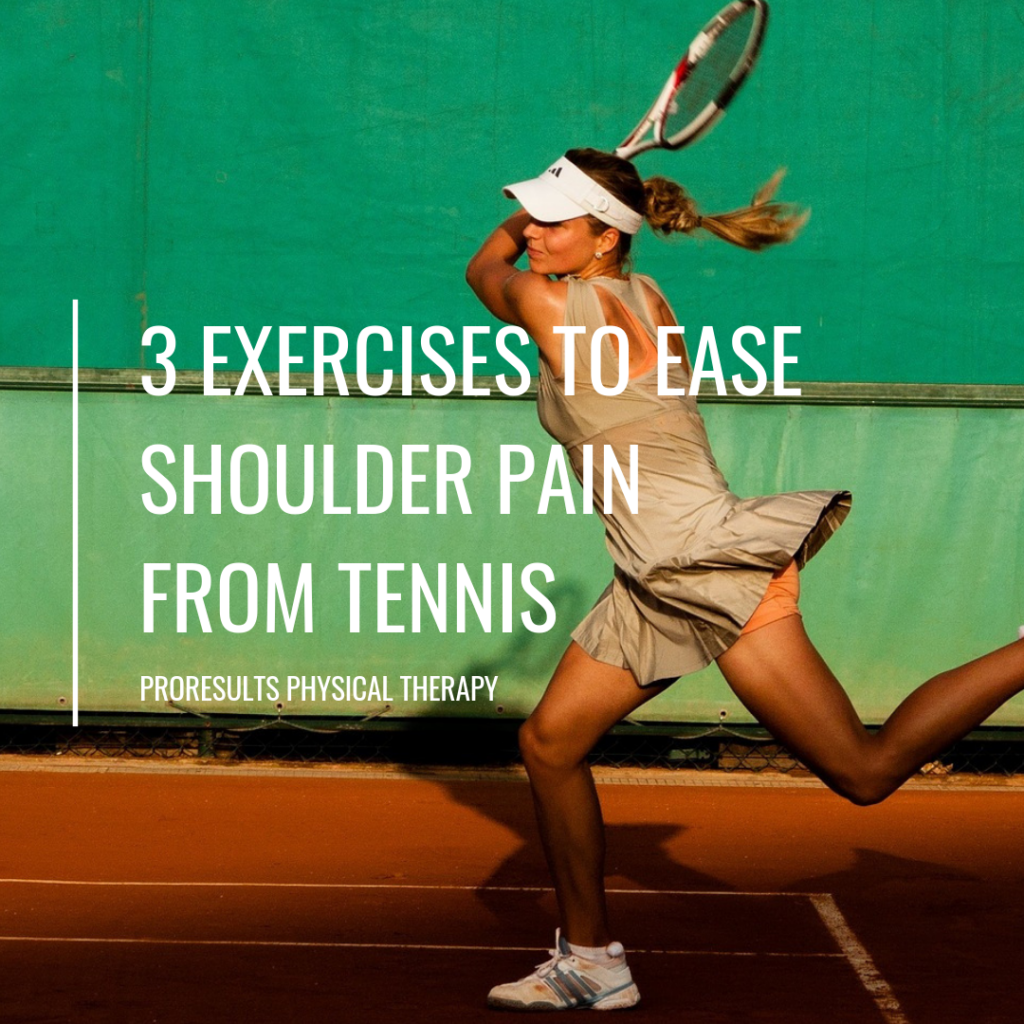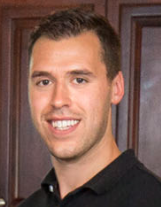3 Exercises to Ease Shoulder Pain From Tennis

Shoulder problems may not be the most talked about conditions in tennis, but they may be a lot more prevalent than you think. Most of us are familiar with conditions such as tennis elbow, tennis knee, and tennis toe. But believe it or not, aching shoulders are the most common overuse tennis injuries robbing both professionals and recreational players of valuable playing time on the court and comfort.
Tennis can be rough on the shoulders. The difficulty lies in the shoulder joint’s construction and the high demand placed on it by the modern ballistic tennis serve. Without a well-conditioned rotator cuff (a group of muscles located on the back of the shoulder that provide stability to the shoulder joint), the shoulder is highly susceptible to injury and pain. Research has shown that up to 120 percent of a person’s body weight slams through the rotator cuff muscles of the shoulder during a serve. The rotator cuff then has to work really hard to counteract the immense amount of force by acting as the “brakes of the shoulder.” Unfortunately, playing tennis builds up the strength of the front of the shoulders and causes tightness and weakness of the back of the shoulder (the rotator cuff). When those rotator cuff muscles get tight and weak, it causes faulty movement patterns of the head of the arm bone (called the humerus) within the shoulder socket (called the glenoid). This causes the humeral head to rise up and pinch the rotator cuff tendons as they attach onto the front of the shoulder. This is the reason why although the issue is happening on the back of the shoulder (weak and tight rotator cuff tendons), pain is felt on the front of the shoulder where the pinching is occurring.
So, what can you do to help fix this problem? Should you quit tennis all together? Absolutely not! Should you just “rest your shoulder then you’ll be okay”? I’m afraid not. The solution to this issue is actually pretty simple. We need to start by stretching the rotator cuff muscles in the back of the shoulder. This will help to improve your shoulder mobility and range of motion by reducing the tightness of those overworked tendons. It’s crucial to follow up your stretching exercises with some good old fashion strengthening. Building strength is crucial to improving the rotator cuff tendons’ ability to accept and generate force properly during a full game of tennis. This will help to maintain the normal movement of the shoulder joint and reduce the amount of irritation to the tendons as they attach onto the front of the shoulder. This means more game time on the tennis court and less time wasted on the side lines.
I’ve provided you with the three most common exercises I typically start people out with in my clinic to help correct this issue. An elastic exercise band can be used for the two strengthening exercises below. These exercise bands can be purchased on Amazon or at your local sports equipment store for a very reasonable price. Of course, this is only meant to be a small part of a very comprehensive rehabilitation program. Seeking a Physical Therapist skilled in treating overhead athletes, such as tennis players, is crucial to having a long term successful rehabilitation outcome. I explain and show them in a little more detail below.
1. Sleeper’s Stretch
Start by lying on your side with the painful arm on the bottom. Your painful arm should be bent at the elbow and forearm pointed upwards towards the ceiling as shown .Next, use your non-painful arm to gently draw your painful forearm towards the table or bed for an inward stretch. A stretch should be felt in the back of the shoulder. Hold this stretch for 60-90 seconds and repeat 3 times.

2. Internal Shoulder Rotation Strengthening
While holding an elastic band at your side with your elbow bent, start with your hand away from your stomach, then pull the band towards your stomach. Keep your elbow near your side the entire time. Perform this exercise for 10 repetitions and repeat 3 times.

3. External Shoulder Rotation Strengthening
While holding an elastic band at your side with your elbow bent, start with your hand near your stomach and then pull the band away. Keep your elbow at your side the entire time. Perform this exercise for 10 repetitions and repeat 3 times.

Give these three exercises a try and see how you feel. I’d love to hear from you if you feel these exercises really helped you. Try and implement these into your workout regimen and also before you play your next tennis match to prevent pain and soreness from keeping you off the court!
Interested in a FREE DISCOVERY VISIT or FREE TELEPHONE CONSULTATION with one of our licensed Doctors of Physical Therapy? CLICK HERE to schedule your complimentary discovery visit or telephone consultation today to see if ProResults Physical Therapy has the natural, long-term, effective solution you’ve always been looking for to help you get back on the court free of pain resorting to pain medications, injections, or surgery!
ABOUT THE AUTHOR:

Dr. Garrett Desrosiers PT, DPT
Garrett is the CEO and Co-Owner of ProResults Physical Therapy Inc. in San Marcos, CA (North San Diego County). Garrett has been helping on-the-go active adults and athletes across the south western United States return to a pain-free active lifestyle without medications, injections, surgery or making unnecessary trips to the physician’s office since 2015. He graduated in 2013 with his Bachelors of Science in Kinesiology then went on to receive his Doctorate of Physical Therapy from Husson University in 2015. After working for three years in multiple fast paced outpatient orthopedic physical therapy clinics, Garrett quickly realized he was not able to provide the elite quality care he knew his clients deserved. Garrett felt clients were more than just a number or diagnosis and that in order to provide the time, empathy, passion, and high-quality treatment they deserved, starting his own private practice was the only option. Garrett is committed to helping every client make the best decision in regard to their health. His unique, personalized, eclectic, multifaceted approach takes those individuals who have decreased their activities or stopped being active all together to a real solution.
